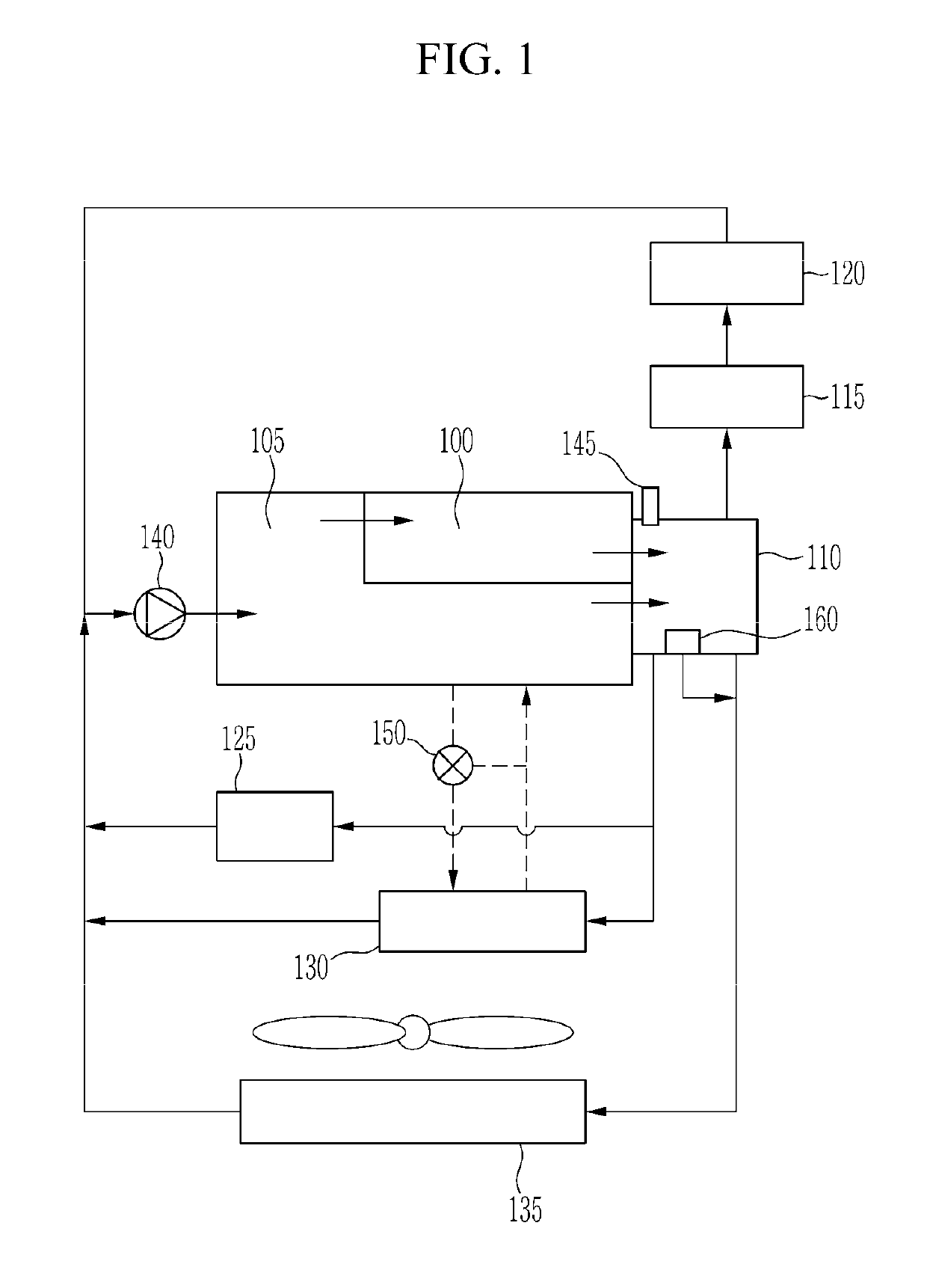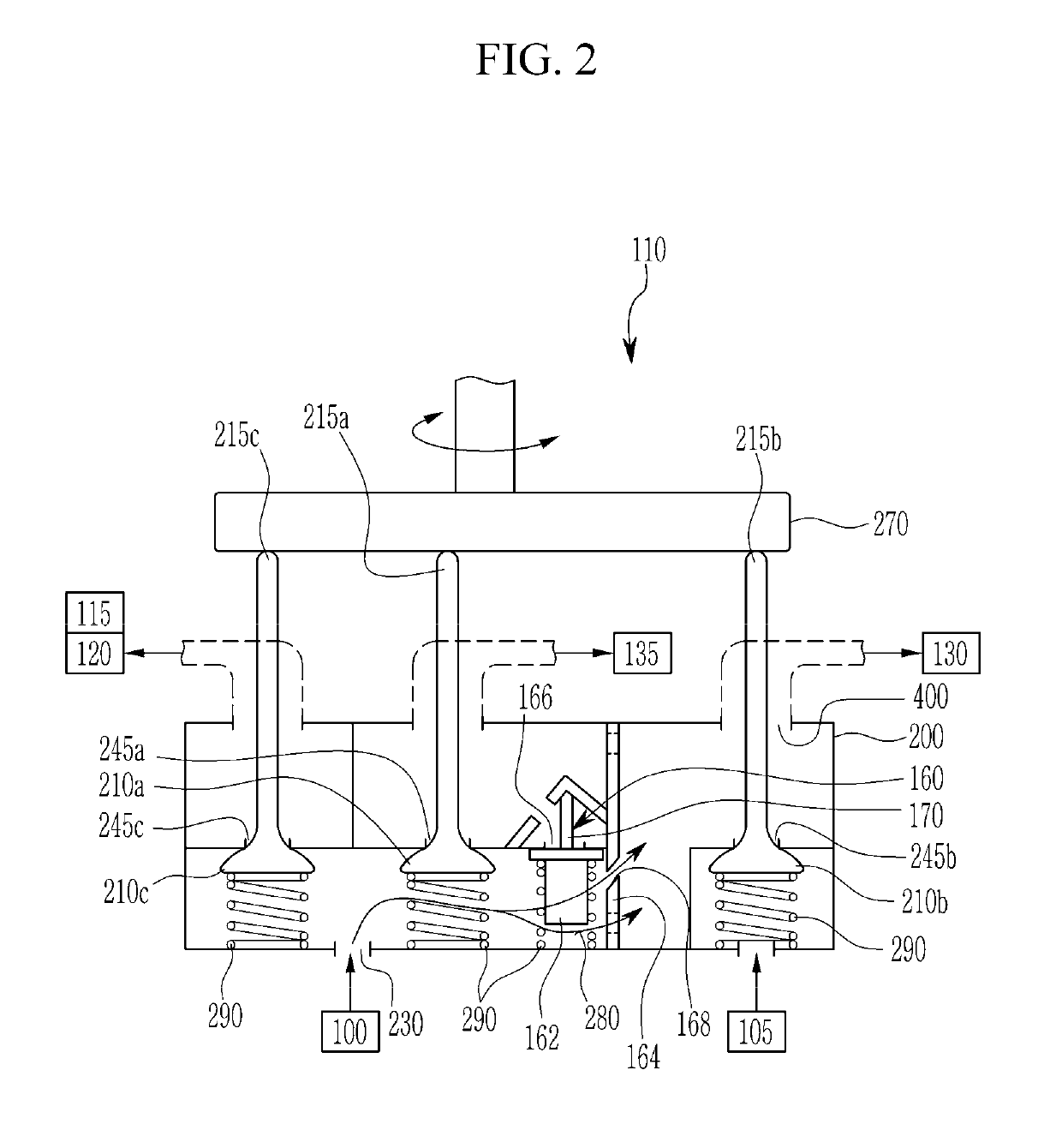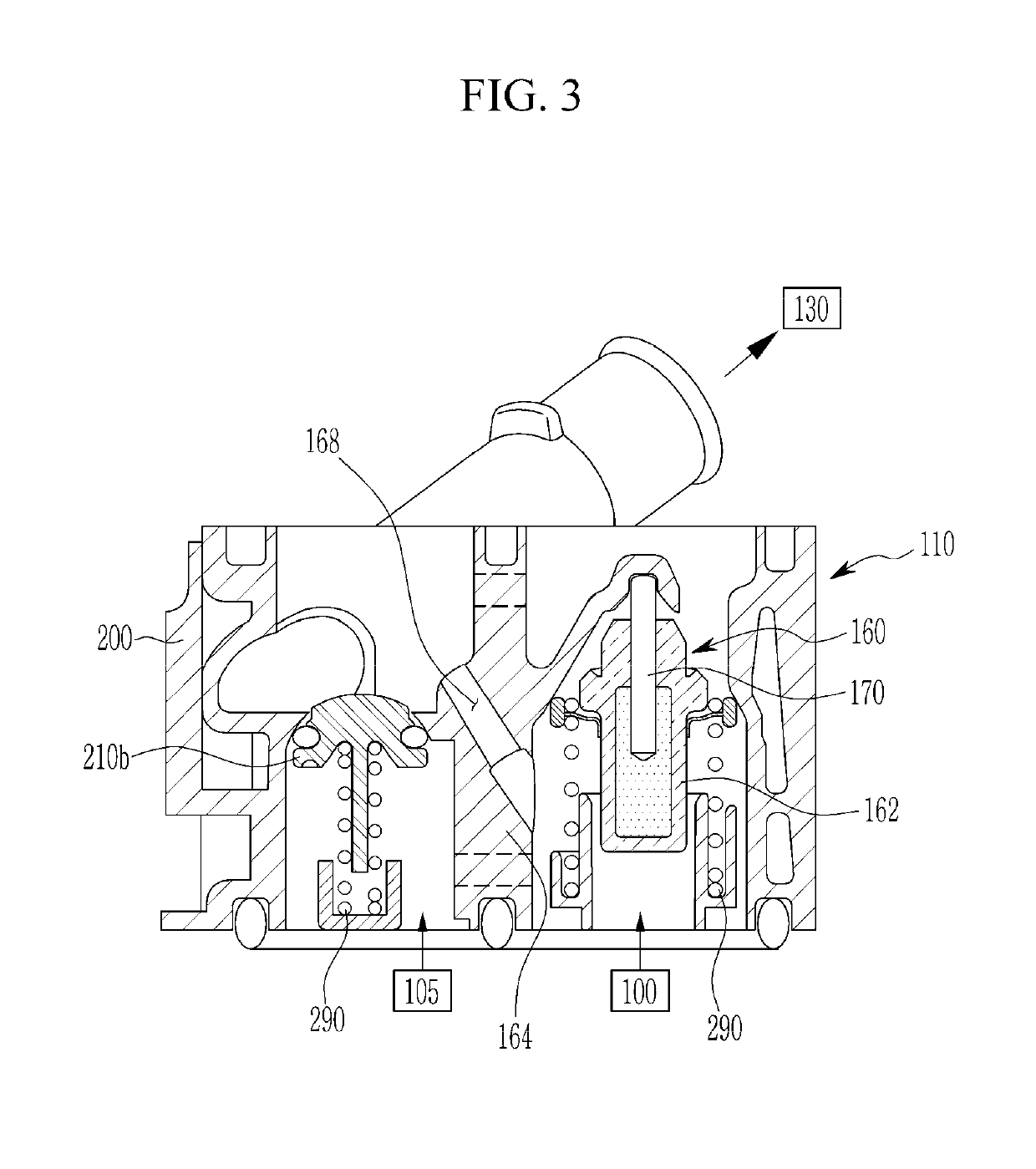Coolant control valve and a cooling system having same
- Summary
- Abstract
- Description
- Claims
- Application Information
AI Technical Summary
Benefits of technology
Problems solved by technology
Method used
Image
Examples
Embodiment Construction
[0036]An embodiment of the present disclosure is hereinafter described in detail with reference to the accompanying drawings.
[0037]The size and thickness of the parts in each configuration illustrated in the drawings may be arbitrarily illustrated for explanatory convenience. However, the present disclosure is not limited thereto, and the thicknesses may be enlarged for more apparently expressing various portions and regions.
[0038]In addition, in order to more clearly explain an embodiment of the present disclosure, a detailed description of a portion, which is not related to the disclosure, may have been omitted. Also, like reference numerals designate like or similar constituent elements throughout the specification and drawings.
[0039]Names of elements in the following description may be distinguished as “first”, “second”, and the like in order to distinguish the elements because the names of the elements are the same. Those elements are not particularly limited to any specific or...
PUM
 Login to View More
Login to View More Abstract
Description
Claims
Application Information
 Login to View More
Login to View More - R&D
- Intellectual Property
- Life Sciences
- Materials
- Tech Scout
- Unparalleled Data Quality
- Higher Quality Content
- 60% Fewer Hallucinations
Browse by: Latest US Patents, China's latest patents, Technical Efficacy Thesaurus, Application Domain, Technology Topic, Popular Technical Reports.
© 2025 PatSnap. All rights reserved.Legal|Privacy policy|Modern Slavery Act Transparency Statement|Sitemap|About US| Contact US: help@patsnap.com



